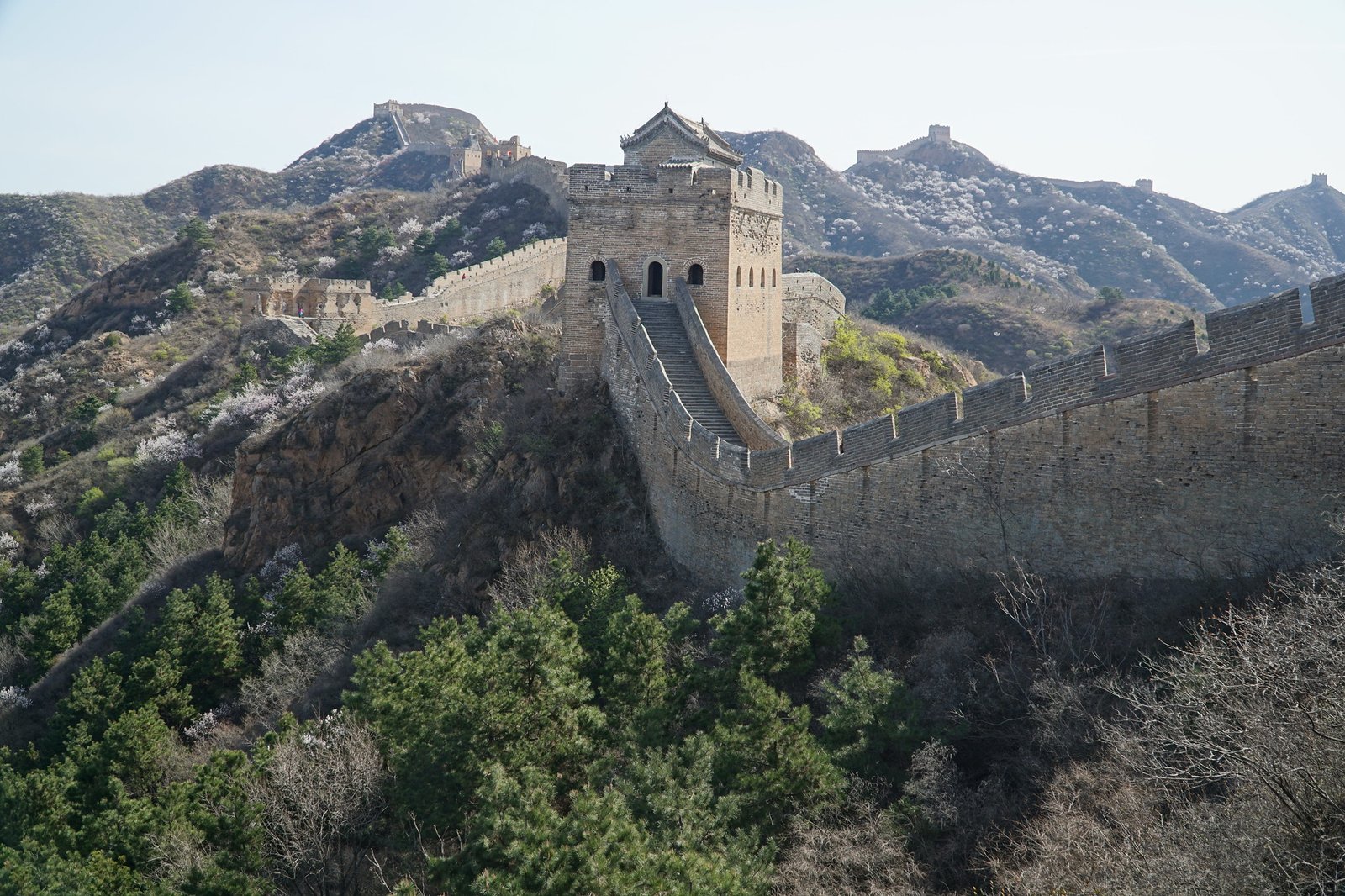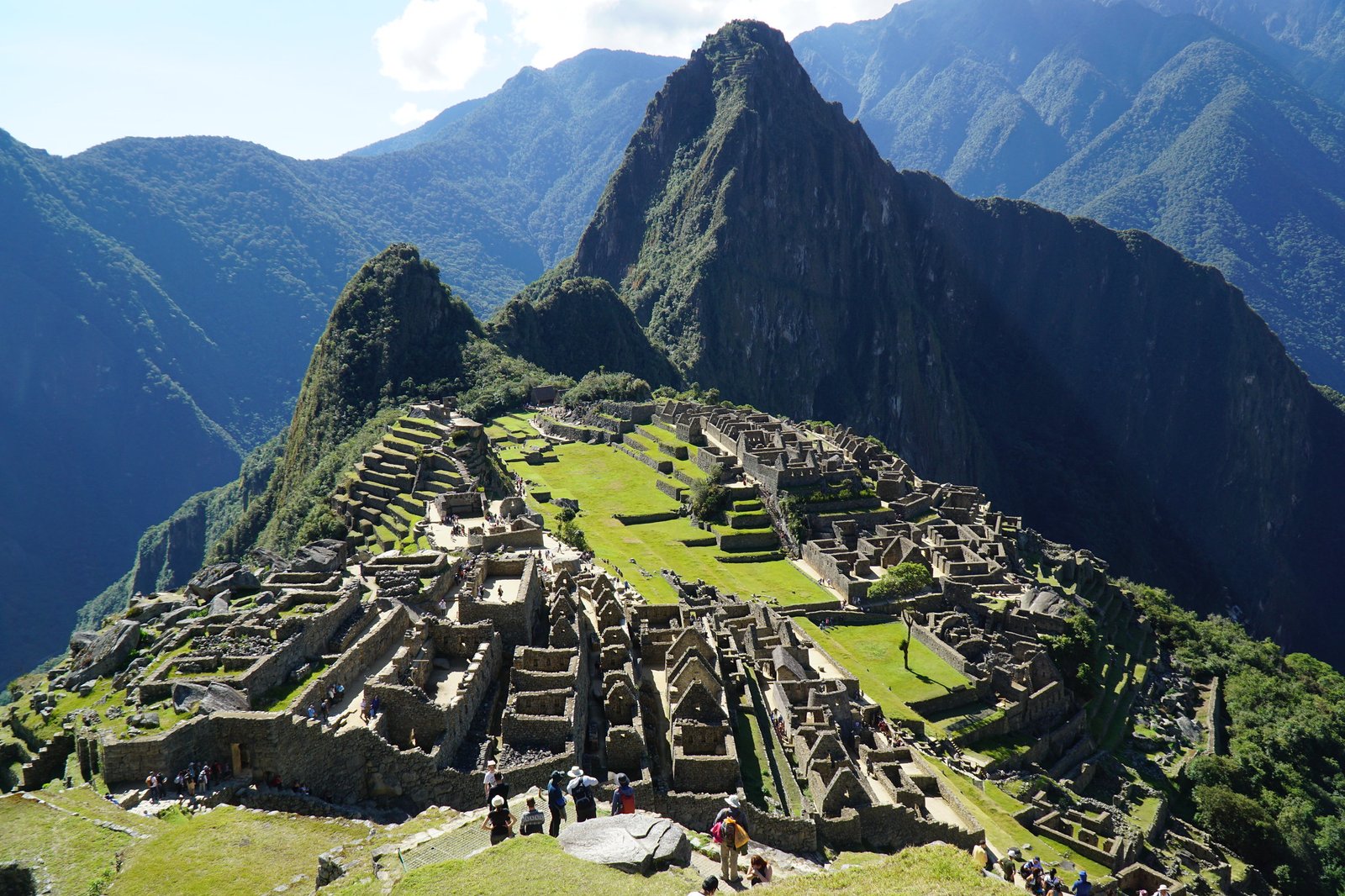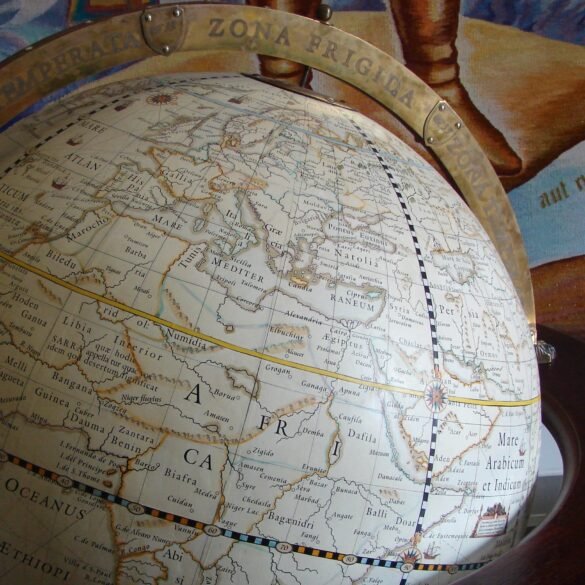Start with Part I here for the Colosseum, Chichen Itza, and Taj Mahal.
4. Christ the Redeemer
By the time we visited Brazil in 2015, Christ the Redeemer was firmly established as one of the New Wonders of the World, and the tourists were certainly aware of it. From our research, we quickly realized that our only chance to not be crushed to death at the feet of this enormous statue on the top of Corcovado Mountain was to arrive as early as humanly possible, hoping to beat the crowds. The site is open at 8 am, and we got up at 5 am that morning and took a taxi to the Cosme Velho neighborhood, where we got in front of the quickly forming line to the Christ the Redeemer Railway. This historic cogwheel train took us on a scenic 20-minute journey through the Tijuca Forest National Park, up the Corcovado Mountain, and we were lucky and early enough to get in the first train car of the first train that morning. And there it was, at the summit, the imposing figure of Christ the Redeemer, his outstretched arms embracing the vibrant city of Rio de Janeiro below.
There were maybe only ten people there with us on that large platform, and for a blissful twenty minutes, we were able to walk around and take in the breathtaking view from the panoramic vista and of the incredible statue itself. It’s hard to describe just how big Christ the Redeemer is, especially from up close. The statue itself doesn’t have any fine details and carvings, possibly due to its sheer size and the fact that it’s not really possible to get a very close view of it. But, in its simplicity of clear, beautiful lines and the grandeur of the silhouette, it radiates a sense of peace, hope, and a profound connection to something greater than ourselves. The serene presence of this statue stands in stark contrast to the sprawling city below with its vibrant colors and bustling energy. I had, before visiting, presumed that the outstretched hands of Christ represented his posture on the cross, as he is often depicted in paintings. Once I was at his feet, I realized that the statue was in fact embracing the world with open arms, representing the power of faith, love, and acceptance.
And just like that, twenty minutes were gone, and another train full of tourists arrived, followed by another train, until it was impossible to walk freely on the platform. We squeezed through the crowd back to the train platform for our ride back down, still elated from the precious time we spent almost “one-on-one” with this Wonder of the World.


5. Great Wall of China
Even a short nine-day trip to China in 2017 warranted an entire day dedicated to the world-famous Great Wall of China. We were going to take a day trip from Beijing, and the only question was which section of this famed wall we were going to visit. Once again, avoiding crowds of tourists was on top of our list, but being able to reach our destination within a few hours was just as important. After all, we didn’t want to spend most of our precious day traveling to and from the historical attraction. We decided to avoid the incredibly popular Badaling section, which due to its close location to Beijing and well-preserved stairs and watchtowers, was always swarming with tourists. We took a two-hour, $130 taxi ride to the Jinshanling section of the Great Wall and enjoyed the serenity of this World Wonder.
The Jinshanling section is in a relatively well-preserved condition and has been restored for easier climbing. But before we could get there, we had to take a cable car from the Front Gate to Small Jinshan Tower. Having been spoiled by the world-class gondolas of Colorado and Canada’s ski resorts, I was initially very hesitant to enter the cramped, creaking, and clearly well past its prime cable car. There were no other tourists in line to alleviate my fears that this was in fact a safe endeavor, except Victor who didn’t share any of my concerns and casually walked into it, as if it wasn’t swaying and squeaking in the wind under its own weight. I followed, mostly because there was no other option, and now I am happy to report that we arrived at our destination alive and well.
The Great Wall, zigzagging across the rugged landscape, with its ancient watchtowers and winding pathways, was an incredible sight to behold. As we walked up and down the ancient steps, marveling at the surrounding mountains and lush forests below, it was easy to imagine the barbaric Mongolian hordes hiding in the trees and in the rocky crevasses, ready to mount an attack. The sheer magnitude and grandeur of the Great Wall left us in awe of the human perseverance and resilience it took to build such an architectural marvel. After a bit of walking, we sat down on a crumbled bit of the wall and watched it stretch into the distance on both sides of us - endless, magnificent, towers rising into the sky. While it’s a myth that the Great Wall of China can be seen from space, it’s absolutely true that it must be seen in person to understand the breathtaking scale and historical significance of this ancient architectural wonder.


6. Machu Picchu
Machu Picchu in 2019 was the most complicated Wonder of the World to plan and coordinate. Due to the growing number of tourists visiting every year and the increased risk of erosion and destruction of the heritage site, multiple limits were put in place. Tourists were allowed in only by timed entry tickets, purchased ahead of time. Each visit could not last longer than 4 hours, and just to make sure no one lingered about, there were no bathrooms, food, or water available onsite.
In order to get to this UNESCO site at our exact entry time, we had to spend the night at Ollantaytambo, wake up early, take a tuk-tuk to a train station, and then a train to Aguas Calientes, the town located at the base of Machu Picchu. The train ride came with stunning views of the Andean mountains and lush valleys. From there, we took a shuttle to Machu Picchu, a 30-minute ride that climbed up steep mountain roads, with more breathtaking scenic views along the way. Finally, upon reaching Machu Picchu, we were greeted with the awe-inspiring sight of the ancient ruins nestled amidst the mist-covered mountains.
We wandered among intricate stone structures, occasionally accompanied by local llamas and avoiding large guide-led groups, marveling at the ingenuity of the Inca civilization. It was hard to imagine what this Inca citadel looked like in the 15th century, what people lived here, how they built these magnificent buildings and managed to successfully plant crops on a mountaintop, and what they sacrificed for their gods. Prior to visiting, I always saw the same picture of Machu Picchu, a gorgeous green valley surrounded by mountain peaks with man-made terraces and remains of stone buildings. Turns out, there is so much more. There are archaeological complexes, squares, temples, water fountains, monuments, and residences. There is an Intihuatana Pyramid where the great solar clock is located, Plaza Sagrada, the main ceremonial site of the city, and temples for ceremonial use. Four hours was barely enough to cover everything and take our time to soak in the spiritual atmosphere.
Since the 2022-2023 Peruvian protests, there are possibly more limitations in place for tourists, so while we highly recommend a visit, make sure to plan thoroughly!



